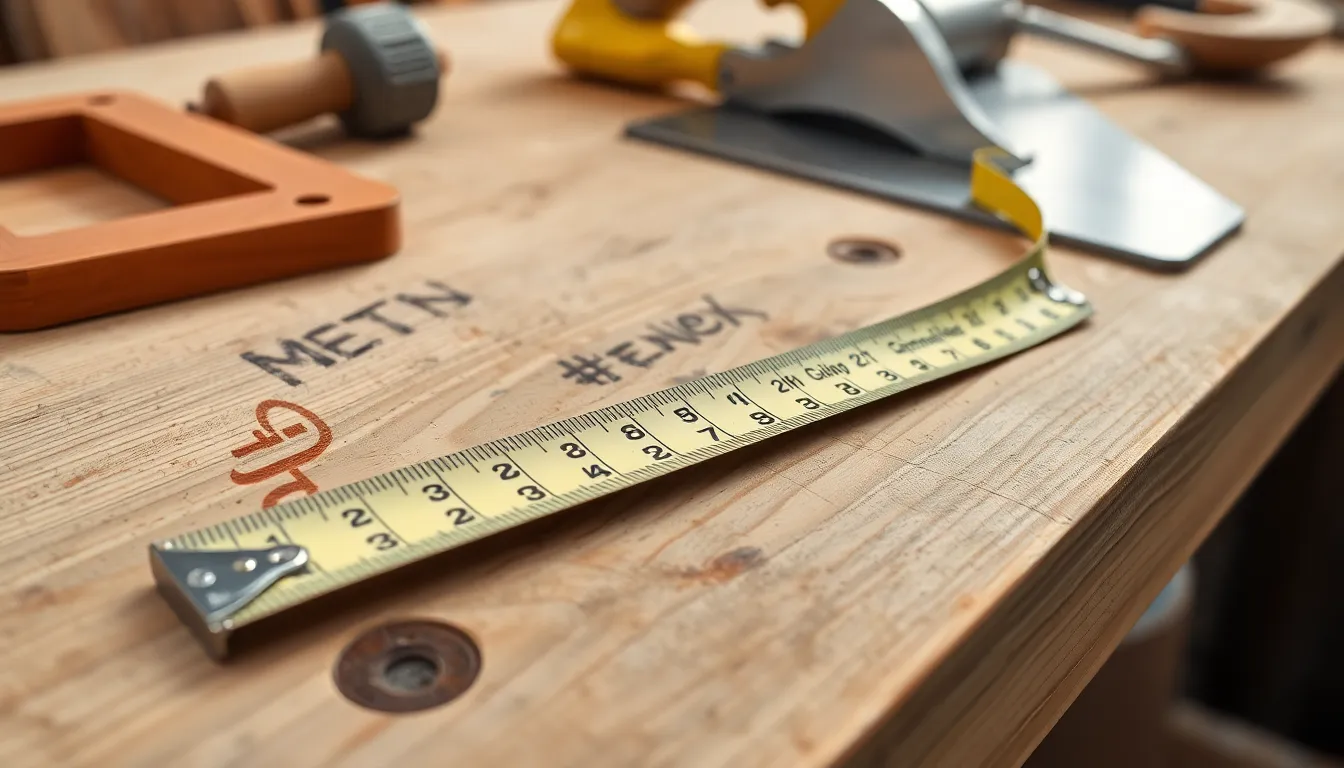When it comes to measurements, understanding the relationship between different units can be crucial. One common question that arises is how many inches are in a cubic foot. This topic is particularly relevant for those involved in construction, woodworking, or any project requiring precise calculations.
A cubic foot is a unit of volume, while inches measure length. Converting between these two may seem daunting at first, but it’s simpler than it appears. By grasping the basic principles of volume and dimension, anyone can easily navigate this conversion. Let’s dive into the details and uncover the answer.
Table of Contents
ToggleUnderstanding Cubic Feet
Cubic feet serve as a standard measurement of volume, commonly used in various fields like construction and woodworking. Understanding cubic feet is crucial for accurate measurements and calculations.
Definition of Cubic Feet
Cubic foot is a unit of volume defined as the volume of a cube with sides measuring one foot in length. In mathematical terms, it represents 12 inches × 12 inches × 12 inches, equating to 1,728 cubic inches. This measurement provides a clear understanding of the space an object occupies.
Importance in Measurements
Cubic feet play a vital role in various applications, including shipping, storage, and construction.
- Shipping: Companies measure cargo volume in cubic feet to optimize shipping costs.
- Construction: Builders calculate material quantities, like concrete or insulation, in cubic feet to ensure proper project specifications.
- Storage: Storage units and containers list capacity in cubic feet for consumer clarity.
Accurate volume measurements in cubic feet ensure efficient use of space and resources.
Conversion Factors

Understanding conversion factors between inches and cubic feet simplifies volume calculations, especially in construction and woodworking.
Inches to Feet Conversion
Inches convert to feet by recognizing that 1 foot equals 12 inches. Therefore, to convert inches to feet, divide the number of inches by 12. For example:
- 24 inches = 24 ÷ 12 = 2 feet
- 36 inches = 36 ÷ 12 = 3 feet
This method ensures accurate measurements, critical in areas requiring precision.
Calculating Cubic Inches
Cubic inches measure volume, defined as the volume of a cube with sides measuring one inch. To derive cubic feet from cubic inches, use the conversion factor of 1 cubic foot equaling 1,728 cubic inches. For example:
| Volume (Cubic Inches) | Volume (Cubic Feet) |
|---|---|
| 1,728 | 1 |
| 3,456 | 2 |
| 5,184 | 3 |
Divide the cubic inch value by 1,728 to determine the volume in cubic feet. This calculation aids in ensuring adequacy in storage and shipping logistics.
How Many Inches in a Cubic Foot?
Understanding the conversion between cubic feet and inches is crucial for precise measurements in various fields. A cubic foot equates to 1,728 cubic inches, and getting familiar with this conversion aids in effective project planning and execution.
Breakdown of the Calculation
Calculating the volume in cubic inches from cubic feet involves a straightforward multiplication. Since a cubic foot contains 12 inches on each side, the formula for volume is:
[
text{Volume (cubic inches)} = text{Length (inches)} times text{Width (inches)} times text{Height (inches)}
]
Specifically, when each dimension is 12 inches, the calculation is:
[
12 , text{inches} times 12 , text{inches} times 12 , text{inches} = 1,728 , text{cubic inches}
]
Alternatively, to find cubic feet from cubic inches, divide the total cubic inches by 1,728:
[
text{Volume (cubic feet)} = frac{text{Volume (cubic inches)}}{1,728}
]
Common Applications
Accurate conversions between cubic feet and inches play vital roles in several areas:
- Construction: Professionals determine material quantities, ensuring projects meet standards without excess waste.
- Storage: Calculations facilitate efficient use of space in warehouses, ensuring maximum storage capacity.
- Shipping: Logistics companies rely on accurate volume measurements to optimize shipping costs and manage freight properly.
- Woodworking: Craftsmen calculate wood dimensions to create precise cuts, eliminating costly errors.
These applications highlight the importance of mastering cubic foot and cubic inch conversions for anyone involved in measurement-centric tasks.
Practical Uses
Understanding the conversion between cubic feet and inches plays a vital role in various practical fields. Professionals in construction, shipping, and storage benefit significantly from accurate volume calculations.
Construction and Carpentry
Construction and carpentry require precision in measurements to ensure structural integrity and material efficiency. Professionals calculate material quantities in cubic feet to determine the volume of concrete, wood, or insulation required. Knowing that one cubic foot equals 1,728 cubic inches allows carpenters to convert dimensions easily when designing furniture or cabinetry. For instance, if a carpenter needs to fill a space of 36,000 cubic inches, dividing by 1,728 provides an accurate cubic foot measurement of approximately 20.83 feet. Mastery of these conversions supports effective project planning and reduces waste, ultimately saving time and resources.
Shipping and Storage
In shipping and storage, calculating volume accurately ensures optimal space utilization and cost management. Companies often measure products in cubic feet to determine shipping costs based on size. For example, if a company has a box measuring 64,800 cubic inches, dividing by 1,728 reveals that the box occupies 37.5 cubic feet of space, impacting freight charges. Effective management of storage facilities relies on these conversions as well; warehouse operators calculate cubic foot capacity to maximize storage layouts and inventory organization. Understanding these measurements facilitates smooth operations and enhanced logistical efficiency in various shipping scenarios.
Mastering the conversion between cubic feet and inches is essential for anyone working in measurement-intensive fields. This knowledge not only aids in accurate calculations but also enhances efficiency in construction, shipping, and storage. Understanding that one cubic foot equals 1,728 cubic inches simplifies the process and allows for precise planning and execution of projects.
Whether it’s determining material quantities or optimizing space in a warehouse, knowing how to navigate these conversions can significantly impact overall productivity. By applying these principles, professionals can ensure they meet project specifications while minimizing waste and costs.



